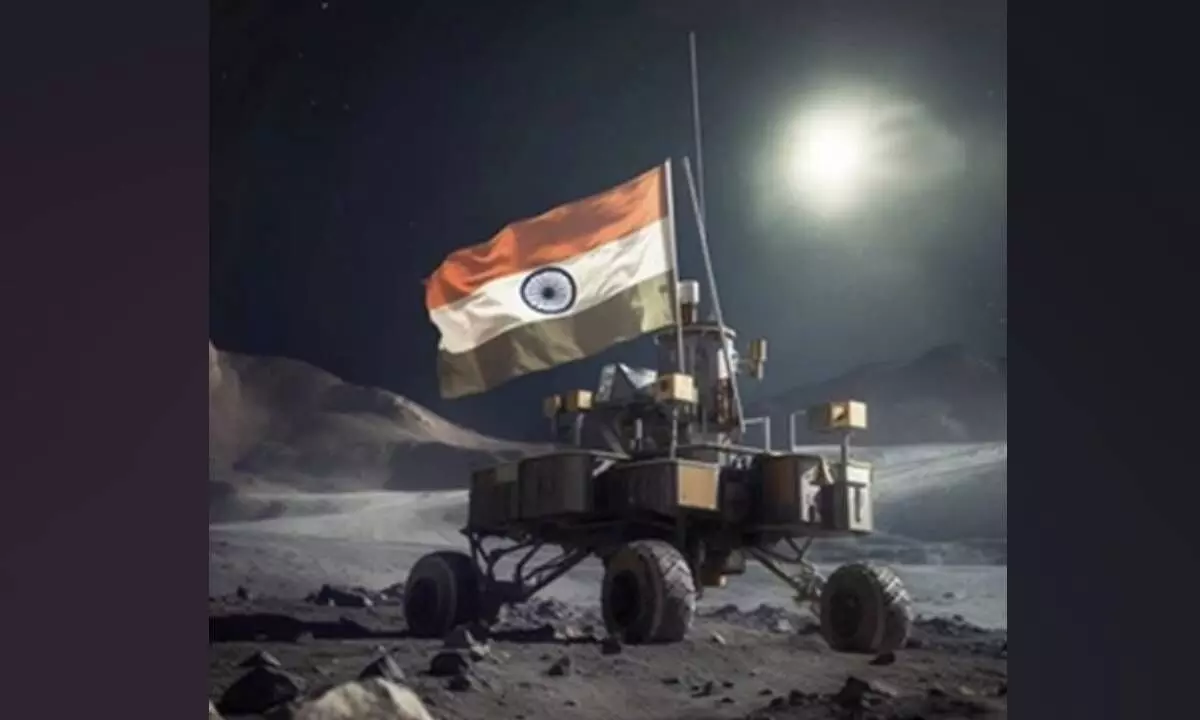Why nations in race to return to Moon?
Water, and increased availability of elements such as oxygen, iron, silicon, hydrogen and titanium have been the major attractions for the scientists aiming to return to the Moon
image for illustrative purpose

New Delhi After about 50 years of humankind’s giant leap to the Moon, there has been a renewed interest to return to the lunar surface.
Water, and increased availability of elements such as oxygen, iron, silicon, hydrogen and titanium have been the major attractions for the scientists aiming to return to the Moon. Also it can provide a gateway to other interplanetary missions.
Scientists also believe that a lunar outpost may serve as a backup for civilization in case of a global catastrophe, like an asteroid impact or a pandemic.
Currently about six space missions from three countries -- India (one), US (four), South Korea (one) are revolving in the Moon’s orbit. While spacecraft have previously landed successfully on the Moon closer to the equator, only India’s Chandrayaan-3 made history on the coveted South Pole of the lunar surface.
It is majorly due to the tricky landing owing to the uneven terrain and because there is no sunlight. The South pole is also not visible from the Earth, and so it is also difficult to establish communication with the spacecraft there.
Russia’s Luna Lander mission, which was expected to be on the Moon’s South Pole along with Chandrayaan-3 however crashed on August 20, while entering a prelanding orbit on the lunar surface.
Countries like Japan, US, Israel, China and Russia are soon likely to launch orbital and lander missions to the Moon.
"South side of the Moon is of special interest to scientists because of the occurrence of water ice in permanently shown areas around it. Extreme contrasting conditions make it a challenging location for Earthlings to land, live, work, but the unique characteristics hold promise for unprecedented deep space scientific discoveries that could help us learn about outplacement in the universe and venture farther into the solar system," Dr. Reetanjali Moharana, Associate Professor, Department of Physics, IIT Jodhpur, told.
“The number one reason to go to the Moon is it will help us to go to other planets. Number two is the abundance of some rare metals like helium and lithium on the Moon which has caught the interest of scientists worldwide. And as resources around the globe are dwindling, this may be a way for strengthening ourselves for humanity tomorrow,” added Dr. Subba Rao Pavuluri, Founder and CMD of Ananth Technologies (ATL) India.
The firm, which has been a long standing partner of ISRO in launch vehicles and satellites, has contributed to the launch vehicle (LVM3) for Chandrayaan-3.
Moharana explained that in the Lunar South Pole, the Sun hovers below or just above the horizon, creating a temperature upwards of 130 degrees Fahrenheit (54 degrees Celsius) during the sunlit period.
“Even during these periods of illumination, soaring mountains cast dark shadows and deep craters protect perpetual darkness in their abysses."

